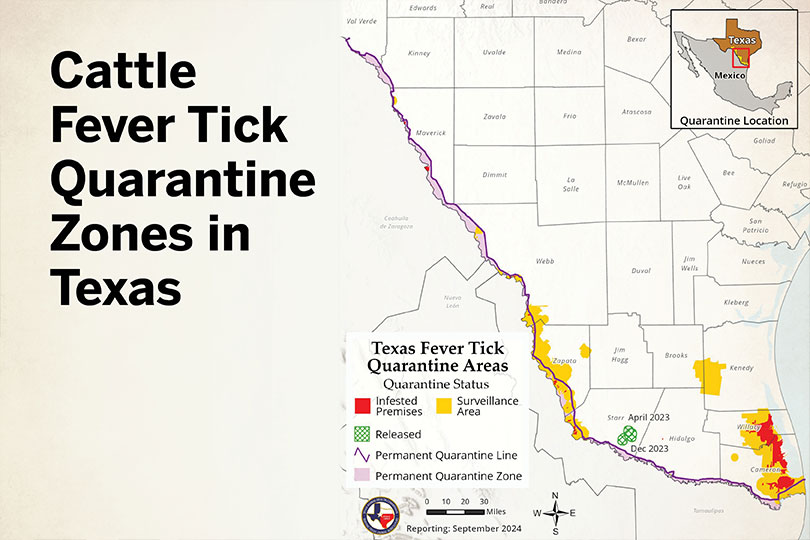By Emmy Powell
Communications Specialist
The Texas Animal Health Commission (TAHC) reminds hunters in the Rio Grande Valley to have any deer or exotics they harvest in a cattle fever tick quarantine area tested before leaving the zone.
Doing so helps prevent the spread of fever ticks to naïve cattle in unaffected areas of the state and nation.
“We want to emphasize the important role hunters play in preventing the spread of fever ticks to regions that are not currently affected,” Dr. Bud Dinges, TAHC executive director and state veterinarian, said.
There are currently cattle fever tick quarantine areas in parts of the following counties: Brooks, Cameron, Hidalgo, Kenedy, Kinney, Maverick, Starr, Val Verde, Webb, Willacy and Zapata.
“Animals hunter harvested within these zones will go through a quick and simple process to protect the rest of the state and nation from the potential spread of these ticks,” Dinges said.
Before a hunter removes an animal carcass or other parts—such as hides, capes or heads—from a quarantined premises, they must obtain a permit.
Once a hunter has a movement permit, they are free to take the hide from the quarantine area.
Hunters who plan to leave the hide at the site of harvest are not required to have the deer or exotic tested prior to leaving the quarantine area.
Inspections are not required if the hunter just plans to take the meat, but TAHC still encourages it.
Those who do not plan to take the hide, but are willing to have it inspected, don’t have to be on-hand for the testing and treatment.
Hunters are required to have the hides of the following animals tested if they’re harvested in a cattle fever tick quarantine area: white-tailed deer, nilgai antelope, black buck, axis deer, red deer, gemsbok, aoudad, Texas Dall Sheep and other exotics.
For more information about fever ticks, fever tick wildlife inspections and contact information for cattle fever tick testing, visit tahc.texas.gov.


Leave A Comment